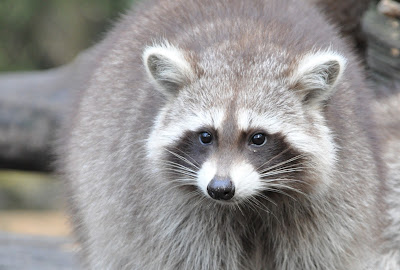The raccoon - an invasive neozoa
When reading the headline, most people first ask themselves the general question. What is a neozoa or the neozoons anyway? Animal species, that have reached an area previously inaccessible to them through the direct or indirect help of humans and have built up new populations there, are referred to as neozoons. There are at least 1100 non-native animal species in Germany but they have to be divided into certain criteria. The first would be whether they are established or not. A species is only classified as established if it can reproduce in the new environment without human help and survive permanently. Of the 1,100 non-native animal species in Germany, that only makes up about 260 animals. You also have to consider whether they are invasive (animal species that affect habitats, species or ecosystems as they spread and can therefore damage biological diversity). That's where the raccoon comes into play.
The current population of raccoons in Germany is estimated to at least 1.3 million animals, making it one of the most common wild predators. The North American raccoon was introduced as a fur animal as early as 1927 and has not only established itself in Europe, but has since significantly expanded its occupied territory. The raccoon feeds on plants, molluscs and vertebrates, including birds. Because of his excellent climbing skills he also reaches usually protected animals. However, since the raccoon mainly eats meat, it kills hundreds of millions of vertebrates every year during the sensitive times of reproduction and rearing in terms of nature conservation. The ecological effects can be acute if raccoons occur in large numbers and the animals live in small areas.
 |
| Picture: Quartl, https://de.wikipedia.org/wiki/Datei:Procyon_lotor_qtl6.jpg, CC SA-BY 3.0 |
No comments:
Post a Comment